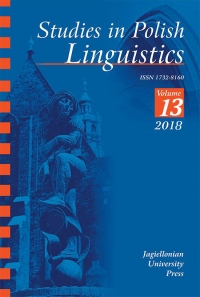Contact-Induced Right-Headed Interfixless N+N Compounds in Polish. A Corpus-Based Study
Contact-Induced Right-Headed Interfixless N+N Compounds in Polish. A Corpus-Based Study
Author(s): Alicja WitaliszSubject(s): Morphology, Western Slavic Languages
Published by: Wydawnictwo Uniwersytetu Jagiellońskiego
Keywords: interfixless compound; borrowing; loanword; loanblend; hybrid creation; word-formation;
Summary/Abstract: While English-Polish language contact results chiefly in English lexical loans, the influence of English on Polish in recent decades has not been limited to lexis and semantics. English penetrates deep into the structural patterns of Polish, and English N+N compound loanwords and loanblends become models for Polish structural neologisms, whose coining may be seen as a violation of native word-formation rules or, at best, as the boosting of a native potential yet non-productive word-formation pattern. It is argued in the article that the increasing productivity of the word-formation rule for deriving right-headed interfixless N+N compounds in Polish is a by-product of intensive lexical borrowing from English. The article explains the mechanism that is responsible for the contact-induced increased productivity (or perhaps the adoption) of a word-formation rule in the recipient language and illustrates it with corpus-sourced material. Most of the newly coined contact-induced N+N formations in Polish are hybrid creations formed in series by analogy to English structural models. The identified formal features of the analysed N+N compounds place them outside of the traditionally recognized types of Polish compounds.
Journal: Studies in Polish Linguistics
- Issue Year: 13/2018
- Issue No: 1
- Page Range: 45-67
- Page Count: 23
- Language: English

